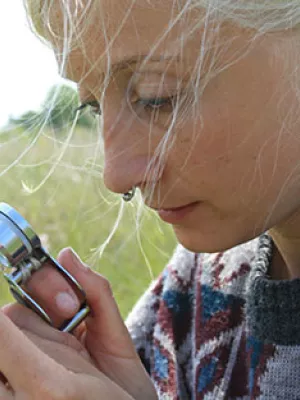
Lina Herbertsson
Researcher

Moving past neonicotinoids and honeybees : A systematic review of existing research on other insecticides and bees
Author
Summary, in English
Synthetic pesticides (e.g. herbicides, fungicides and insecticides) are used widely in agriculture to protect crops from pests, weeds and disease. However, their use also comes with a range of environmental concerns. One key concern is the effect of insecticides on non-target organisms such as bees, who provide pollination services for crops and wild plants. This systematic literature review quantifies the existing research on bees and insecticides broadly, and then focuses more specifically on non-neonicotinoid insecticides and non-honeybees. We find that articles on honeybees (Apis sp.) and insecticides account for 80% of all research, with all other bees combined making up 20%. Neonicotinoids were studied in 34% of articles across all bees and were the most widely studied insecticide class for non-honeybees overall, with almost three times as many studies than the second most studied class. Of non-neonicotinoid insecticide classes and non-honeybees, the most studied were pyrethroids and organophosphates followed by carbamates, and the most widely represented bee taxa were bumblebees (Bombus), followed by leaf-cutter bees (Megachile) and mason bees (Osmia). Research has taken place across several countries, with the highest numbers of articles from Brazil and the US, and with notable gaps from countries in Asia, Africa and Oceania. Mortality was the most studied effect type, while sub-lethal effects such as on behaviour were less studied. Few studies tested how the effect of insecticides were influenced by multiple pressures, such as climate change and co-occurring pesticides (cocktail effects). As anthropogenic pressures do not occur in isolation, we suggest that future research also addresses these knowledge gaps. Given the changing global patterns in insecticide use, and the increasing inclusion of both non-honeybees and sub-lethal effects in pesticide risk assessment, there is a need for expanding research beyond its current state to ensure a strong scientific evidence base for the development of risk assessment and associated policy.
Department/s
- BECC: Biodiversity and Ecosystem services in a Changing Climate
- Lund Vision Group
- Functional zoology
Publishing year
2023
Language
English
Publication/Series
Environmental Research
Volume
235
Document type
Journal article review
Publisher
Elsevier
Topic
- Environmental Sciences related to Agriculture and Land-use
Keywords
- Bumblebee
- Pesticides
- Plant protection products
- Risk assessment
- Synthetic insecticides
Status
Published
Research group
- Lund Vision Group
ISBN/ISSN/Other
- ISSN: 0013-9351